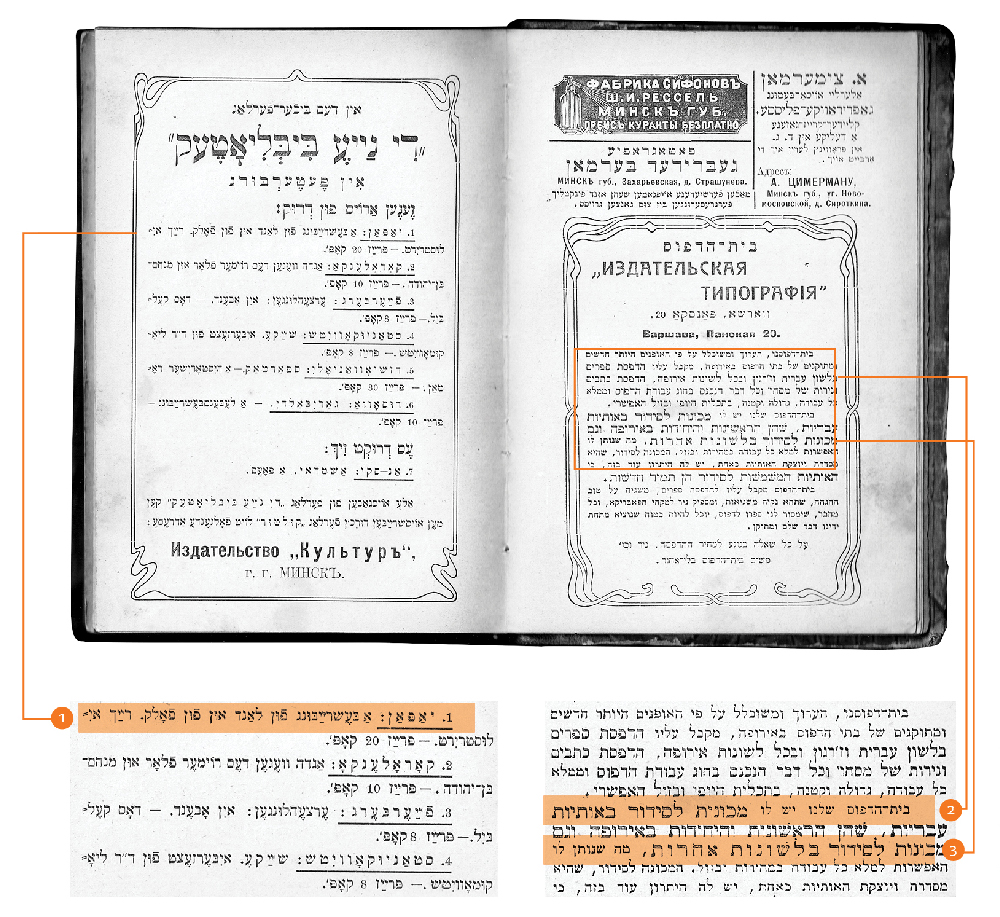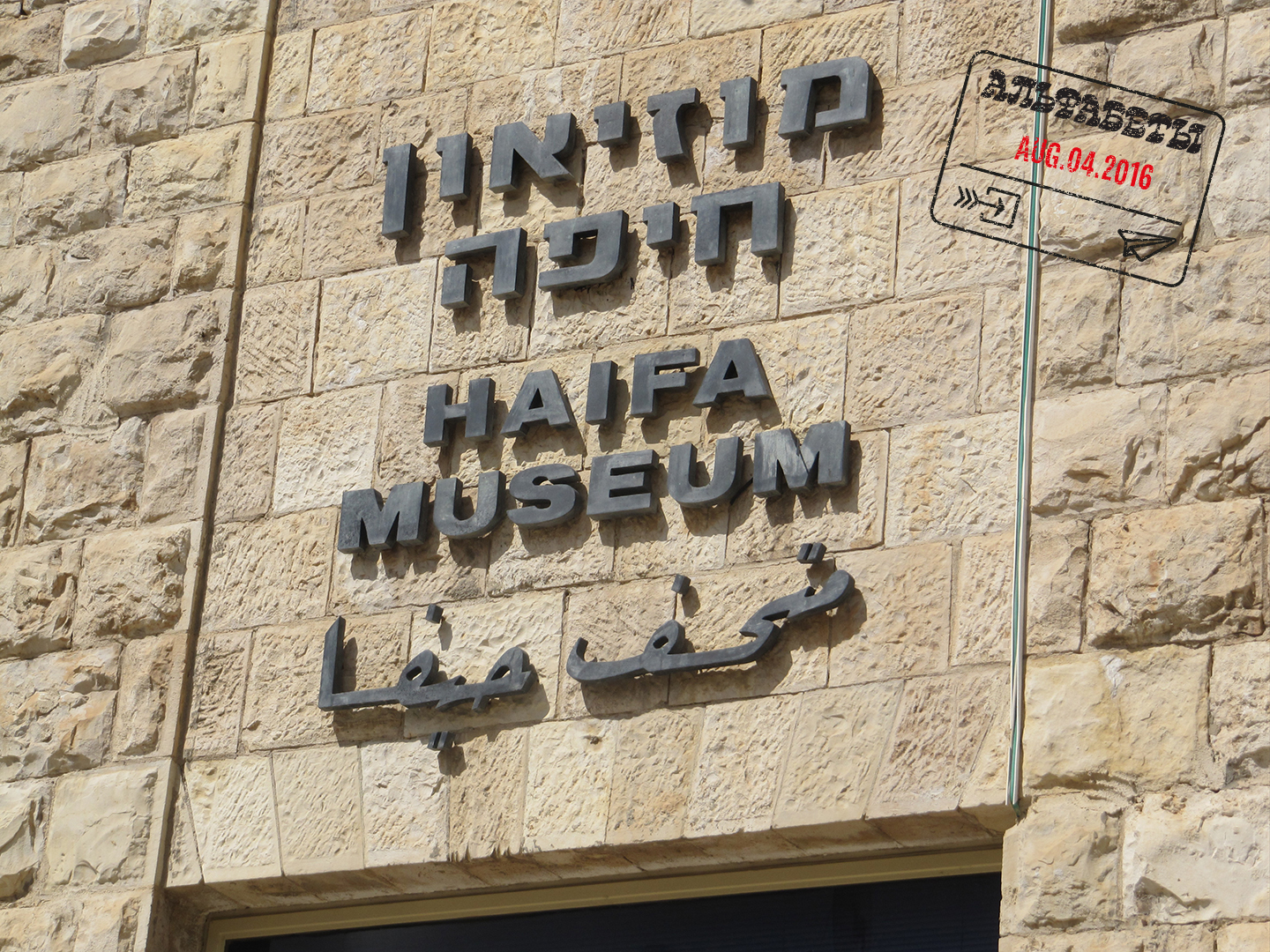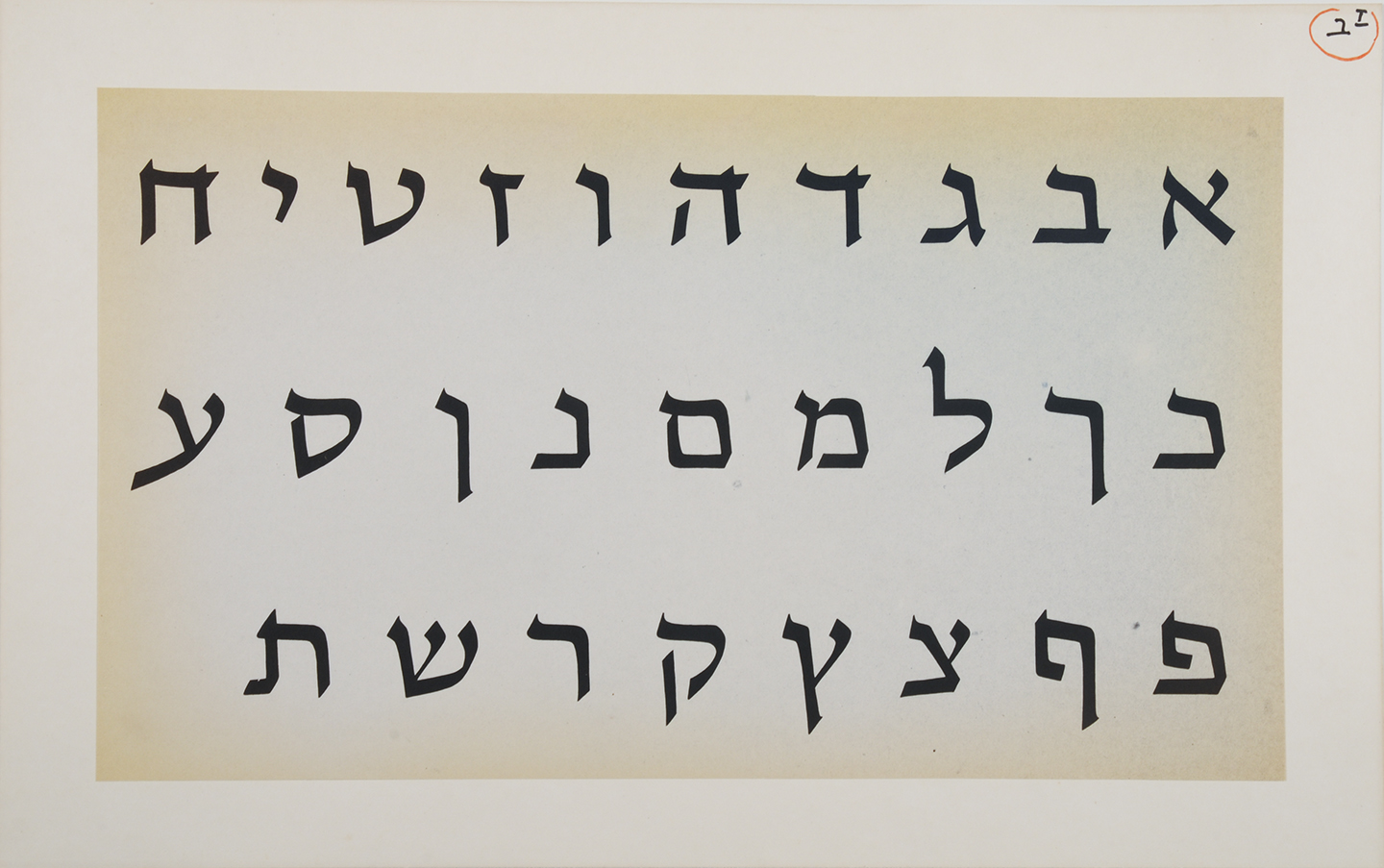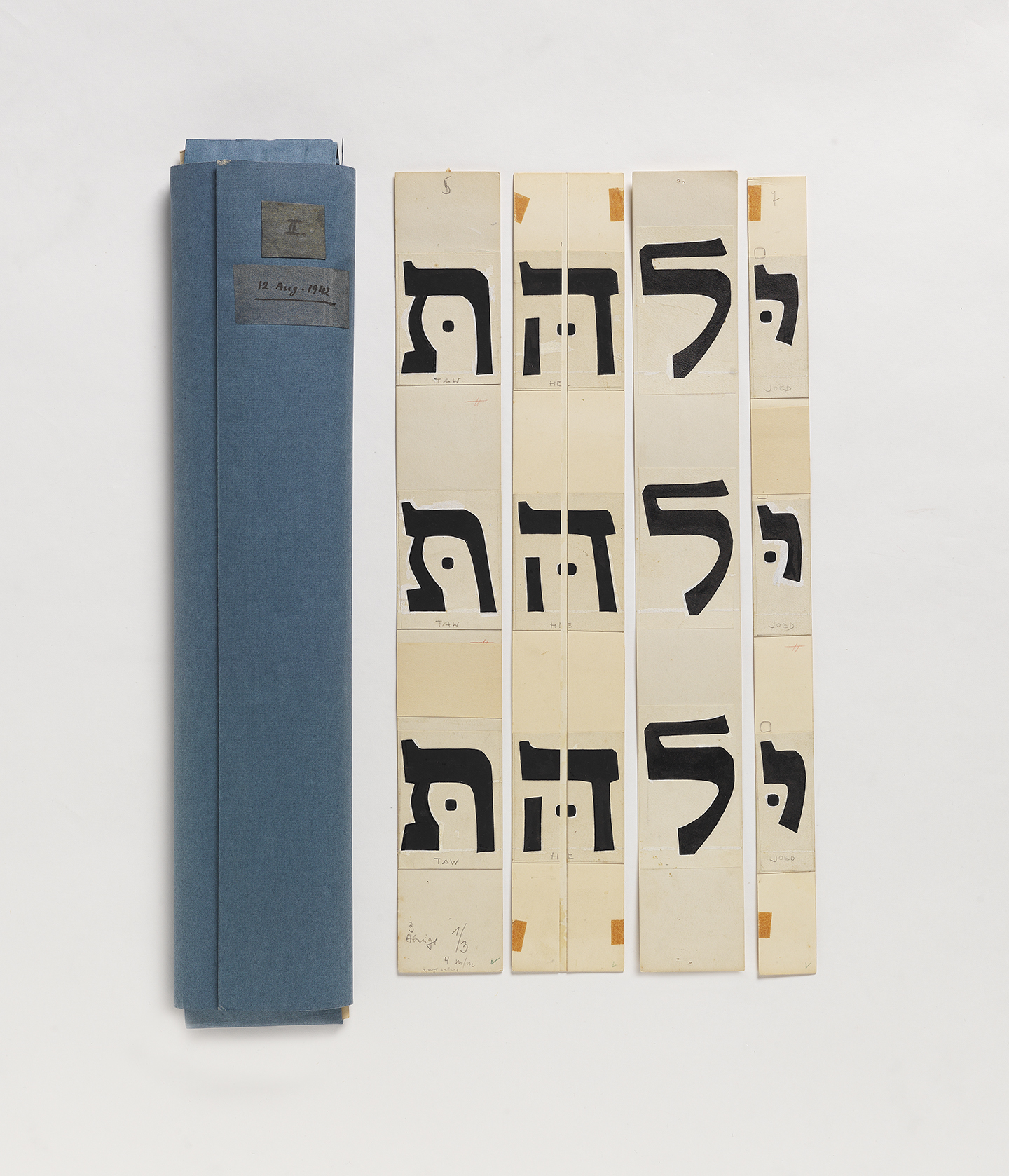Exploring the first multi-style Hebrew typeface family
Lost
Hebrew was the language of the Israelite and Judean people for over 1,300 years when around 200 BCE, it died as an everyday language and was confined to religious use.1 This affected the Hebrew script heavily, since it only developed those attributes that were necessary to present specific religious texts. Therefore, Hebrew is lacking the typographic tools that would have evolved and developed from an ongoing secular use. Moreover, the Hebrew script was considered sacred. The scribes that were permitted to write manuscripts were concerned with preserving the letterform appearance, even at the expense of the ease and speed in which they could be read.2
Hebrew was reintroduced as a spoken language in the 1880s. Since then, it experienced an accelerated process of revival. The shift from the written form to movable type was a hastened and interrupted one and did not allow for refinement and distillation of the letterforms.
Setting type in the Hebrew script was and still is a frustrating experience. Not only there is a shortage in typefaces which sufficiently address specific Hebrew script issues, but the few that are available mostly consist of a single regular style, accompanied by a small number of weight variations. So, what is a Hebrew typesetter to do when trying to create differentiation within a text? I remember how pleased I was when I found a book published in 1905 in Minsk. In it I spotted one spread that seemed tailor-made to answer my question. The typesetter used different typefaces, different sizes, increased letter spacing and underlining. These were amongst the popular typographic solutions throughout the 20th century.

A spread from the book printed in 1905 in Minsk showing the various ways to handle word differentiation and emphasis without a typeface family: 1. Underlining a word. 2. A different typeface, in a different size. 3. Increased letter spacing.


